MARPAT
MARPAT (short for Marine pattern)[1] is a multi-scale camouflage pattern in use with the United States Marine Corps, designed in 2001 and introduced from late 2002 to early 2005 with the Marine Corps Combat Utility Uniform (MCCUU), which replaced the Camouflage Utility Uniform. Its design and concept are based on the Canadian CADPAT pattern. The pattern is formed of small rectangular pixels of color. In theory, it is a far more effective camouflage than standard uniform patterns because it mimics the dappled textures and rough boundaries found in natural settings. It is also known as the "digital pattern" or "digi-cammies" because of its micropattern (pixels) rather than the old macropattern (big blobs).
| MARPAT (Marine Pattern) | |
|---|---|
 A swatch of MARPAT-printed fabric in the woodland pattern variant | |
| Type | Military camouflage pattern |
| Place of origin | United States |
| Service history | |
| In service | 2002–present |
| Used by | U.S. Marine Corps (including Reserve and JROTC) U.S. Navy (primarily corpsmen, chaplains, and religious program specialists) New York Naval Militia Texas Maritime Regiment See Users (for other non-U.S. users) |
| Wars | War in Afghanistan (2001–present) Iraq War Russo-Georgian War |
| Production history | |
| Designer | Timothy O'Neill, Anabela Dugas, Kenneth G. Henley, John Joseph Heisterman, Jr., Luisa DeMorais Santos, Gabriel R. Patricio, Deirdre E. Townes |
| Designed | 2000–2001 |
| Produced | 2001–present |
| Variants | Desert MARPAT, Woodland MARPAT, Winter MARPAT See Design and colors for more details |
%2C_by_John_M._Carrillo.png)
The United States government has patented MARPAT, including specifics of its manufacture.[2] By regulation, the pattern and items incorporating it, such as the MCCUU and ILBE backpack, are to be supplied by authorized manufacturers only and are not for general commercial sale, although imitations are available such as "Digital Woodland Camo" or "Digital Desert Camo".
MARPAT was also chosen because it distinctively identifies its wearers as Marines to their adversaries, while simultaneously helping its wearers remain concealed. This was demonstrated by a Marine spokesman at the launch of MARPAT, who stated: "We want to be instantly recognized as a force to be reckoned with. We want them to see us coming a mile away in our new uniforms."[3] As such, the U.S. Marine Corps restricts use of the camouflage, preventing its use in most other divisions of the United States military with the exception of some elements of the U.S. Navy.
Development

MARPAT was designed by Timothy O'Neill, Anabela Dugas,[4] Kenneth G. Henley,[4] John Joseph Heisterman, Jr.,[4] Luisa DeMorais Santos,[4] Gabriel R. Patricio,[4] and Deirdre E. Townes.[4]
The concept of using miniature swatches of color as opposed to large splotches is not new. In World War II, German troops used various patterns similar to the current German Flecktarn, which involved similar small dabs of color on a uniform to provide camouflage.
The Canadian Forces originally developed the pattern called CADPAT, on which MARPAT was based.[5] Timothy O'Neill's[6] USMC design team in charge of this process, initially with the assistance of Kenneth G. Henley and then John Joseph Heisterman, Jr. (both active duty U.S. Marine Scout Snipers), went through over 150 different camo patterns before selecting three samples that met their initial objectives. These were two versions of tigerstripe and an older design of Rhodesian Brushstroke. The influence of tigerstripe can still be seen in the final MARPAT. These three samples were then reconstructed using new shapes and unique color blends that would allow a more effective uniform in a great range of environments.
The new patterns were then field tested in different environments, day and night, with night vision and various optics. MARPAT did exceptionally well in their wet uniform test when viewed with night vision while illuminated with IR, where normally patterns appear as a solid. The MARPAT patent lists U.S. Army research into fractal pattern camouflage as the basis for MARPAT.
The MARPAT pattern was chosen in a run-off against seven other patterns at the USMC Scout Sniper Instructor School.[7]
Preliminary development of MARPAT began in April 2000,[8] with field testing of the pattern and the MCCUU beginning in 2001. The patent for the MARPAT pattern was filed on 19 June 2001,[4] whereas the patent for the MCCUU uniform was filed on 7 November 2001.[9] Early prototypes of the MARPAT desert pattern from 2001 featured grey, whereas the finished product did not.
The uniform made its official debut at Camp Lejeune, North Carolina on 17 January 2002.[10] In February 2003, MARPAT-patterned helmet covers began to be produced.[11] The replacement of the BDU and DCU by the MCCUU was completed on 1 October 2004, a year ahead of the original requirement date set in 2001 of 1 October 2005.[12][13][14][15]
The MARPAT uniform was officially fielded as standard issue to the recruits of 3rd BN Mike Company in late 2002 at MCRD San Diego;[16] it continues to be the USMC's standard issue uniform pattern to date.
In all, the MARPAT development process from concept to completion took 18 months, the fastest time for a U.S. military-developed camouflage pattern to be produced.[17]
Design and colors
Different ratios and variations of colors were tested before final candidate patterns were actually printed to textile for field trials. A modified version of Vietnam War–era tiger stripe also made it to final trials but was eliminated due to MARPAT being superior in all environments. The purpose of the digitized pattern is to create visual "noise" and prevent the eye from identifying any visual templates. Thus, the pattern is intended to not register as any particular shape or pattern that could be distinguished.[18]
There were initially three MARPAT patterns tested: Woodland, Desert, and Urban. While keeping the rights for Urban, only the Woodland and Desert patterns were adopted by the Marine Corps for general issue, replacing the U.S. Woodland pattern and the U.S. Three-Color Desert pattern. Webbing and equipment worn with MARPAT Woodland and MARPAT Desert is produced in Coyote Brown, a mid-tone color common to both the woodland and desert patterns. Although a digital snow pattern has also been adopted on cold-weather training over-garments, this uses a different pattern from the Canadian company Hyperstealth.[19]
Authentic MARPAT material is distinguishable by a miniature "Eagle, Globe, and Anchor" emblem incorporated into the pattern above the letters "USMC", in both the woodland and desert patterns.[20]
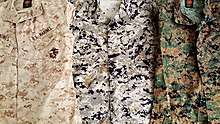 The three tested MARPAT patterns: Desert, Urban, and Woodland pattern
The three tested MARPAT patterns: Desert, Urban, and Woodland pattern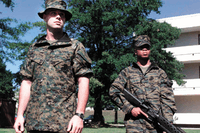 Two U.S. Marines test out early prototypes of the MCCUU in 2001. The two prototypes feature removable sleeves, a feature that was later abandoned on the finished production version. The uniform on the left features an early version of woodland MARPAT.
Two U.S. Marines test out early prototypes of the MCCUU in 2001. The two prototypes feature removable sleeves, a feature that was later abandoned on the finished production version. The uniform on the left features an early version of woodland MARPAT.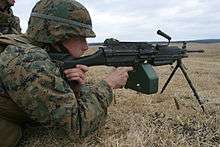 Woodland variant of MARPAT
Woodland variant of MARPAT Desert variant of MARPAT
Desert variant of MARPAT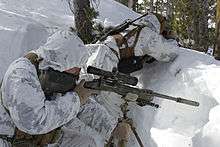 U.S. Marines wearing snow-patterned MARPAT overgarments at the Mountain Warfare Training Center
U.S. Marines wearing snow-patterned MARPAT overgarments at the Mountain Warfare Training Center
Similar designs
MARPAT is aesthetically similar to Canadian Forces CADPAT, which was first developed in the 1990s.[21]
The United States Army used the same shapes in designing its Universal Camouflage Pattern, which uses a much paler three-color scheme of sage green, grey and sand for use on the Army Combat Uniform. After major questions about its effectiveness arose, the Army adopted the "Scorpion W2" Operational Camouflage Pattern in 2015, to be fully phased in by 2019.
The United States Air Force has designed its own Airman Battle Uniform (ABU) using a standard tiger stripe pattern and slight variation on the color scheme of ACU, also designed to be phased out by the OCP uniform by 2021.
The United States Navy announced approval for a digital "BDU-style" work uniform in late 2008. The Navy Working Uniform (NWU) was chosen by surveyed sailors for consistency and longer life, while the blue-grey-black Type I pattern was designed for aesthetic purposes rather than camouflage to disguise them at sea. In January 2010, the Navy began considering new Navy Working Uniform patterns modified from MARPAT, named Type II and Type III, desert and woodland respectively. The Woodland pattern was actually an earlier coloration of the MARPAT scheme, not adopted following USMC trials.[22] These patterns are overall darker than their respective MARPAT progenitors, modified with different color shades,[23] and addressed the fact that the blue and grey Type I pattern was not meant for a tactical environment (the Battle Dress Uniform in M81 woodland and Desert Camouflage Uniform were still used for this purpose until the Type II and III patterns were introduced).[24] Backlash from Marines, including an objection from former Commandant Conway, led to restrictions when NAVADMIN 374/09 was released:[25] Type II pattern to Naval Special Warfare personnel, while the NWU Type III is the standard shore working uniform for all Naval personnel effective 1 October 2019.[26]
Users
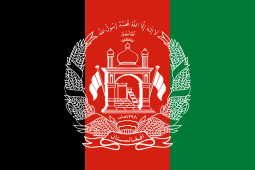

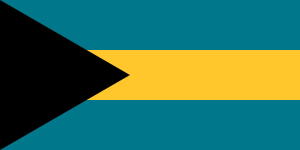







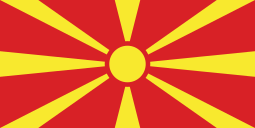

Gallery
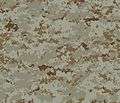 MARPAT desert pattern
MARPAT desert pattern- Two generals wearing woodland MARPAT at a ceremony
- Near-infrared (low light night vision device) comparison of a Navy Working Uniform blouse to MARPAT trousers
- MARPAT compared to NWU Type II and Type III prototypes
 Air Marshal Fahad Al-Amir, the Chief of Staff of the Kuwaiti Armed Forces, speaks to Marines of the 26th Marine Expeditionary Unit wearing a camouflage similar to MARPAT
Air Marshal Fahad Al-Amir, the Chief of Staff of the Kuwaiti Armed Forces, speaks to Marines of the 26th Marine Expeditionary Unit wearing a camouflage similar to MARPAT Camouflage comparison between a Singaporean guardsman and a U.S. Marine.
Camouflage comparison between a Singaporean guardsman and a U.S. Marine.
References
- https://olive-drab.com/od_soldiers_clothing_marpat.php
- "Camouflage U.S. Marine corps utility uniform: pattern, fabric, and design". Archived from the original on 29 January 2014.
- Blechman, Hardy; Newman, Alex (2004). DPM: Disruptive Pattern Material. Department of Publications, Maharishi. ISBN 0-9543404-0-X.
- "Camouflage pattern for sheet material and uniforms US D491372 S". Archived from the original on 20 October 2016. Retrieved 24 February 2018.
- King, A. (2014). "The Digital Revolution: Camouflage Uniforms In The Twenty-First Century". University of Exeter. Retrieved 29 March 2016.
- Fusco, Sgt. Vincent (3 June 2010). "West Point explores science of camouflage". United States Army. Archived from the original on 13 April 2016. Retrieved 29 March 2016.
He designed the Marine Corps' MARine PATtern, or MARPAT camouflage and worked with the Marines, Army, Office of Naval Research and Program Executive Office Soldier on various studies and adaptations of texture match.
- "Combat Utility Uniform Camouflage Considerations". www.tecom.usmc.mil. Archived from the original on 20 September 2001.
- United States Government Accountability Office (September 2012). "Warfighter Support: DOD Should Improve Development of Camouflage Uniforms and Enhance Collaboration Among the Services" (PDF). Report to Congressional Requesters. United States Government Accountability Office. Archived (PDF) from the original on 15 June 2017. Retrieved 3 September 2017.
- "Camouflage U.S. Marine corps utility uniform: pattern, fabric, and design US 6805957 B1". Archived from the original on 29 January 2014. Retrieved 24 September 2013.
- "New uniform debuts today". Around the Fleet. Marine Corps Base Quantico, Virginia. 17 January 2002. Archived from the original on 19 September 2013. Retrieved 19 September 2013.
- https://quicksearch.dla.mil/qsDocDetails.aspx?ident_number=212748%20
- Jontz, Sandra (24 February 2001). "Marines' followed Canadians' example in use of digitally-designed 'cammies'". Stars and Stripes. Archived from the original on 6 June 2002. Retrieved 6 June 2002.
- Pike, John. "Marine Corps Combat Utility Uniform". www.globalsecurity.org. Archived from the original on 13 April 2010.
- Commandant of the United States Marine Corps (22 September 2004). "Maradmin 412/04: Mandatory Possession Dates For The Marine Corps Combat Utility Uniforms (Mccuu) And Marine Corps Combat Boots (Mccb)". United States Marine Corps. Archived from the original on 29 September 2004. Retrieved 29 September 2004.
- Oliva, Mark (3 July 2001). "Officials went to the source to ensure new Marine uniform pleased troops". Stars and Stripes. Archived from the original on 25 July 2001. Retrieved 7 January 2013.
- Alvarez, Eugene; Daugherty, Leo (21 May 2016). Parris Island: "The Cradle of the Corps": A History of the United States Marine Corps Recruit Depot, Parris Island, South Carolina, 1962-2015. Xlibris Corporation. p. 1,996 – via Google Books.
- "Camouflage". Modern Marvels. Season 8. Episode 23. 18 June 2002. The History Channel. Archived from the original on 24 April 2018.
- Kenneth G. Henley, "MARPAT - A Personal Tale - From one of the designers of the Marine Pattern camouflage", MilitaryMorons, Sept 2003
- Snow Camouflage Uniform data sheet Archived 4 March 2009 at the Wayback Machine
- Eagle, Globe and Anchor example, Magna Fabrics.
- Jontz, Sandra (24 February 2001). "Marines' followed Canadians' example in use of digitally-designed 'cammies'". Stars and Stripes. Archived from the original on 27 December 2007. Retrieved 14 January 2010.
- "Two New Navy Working Uniforms Announced". United States Navy. 8 January 2010. Archived from the original on 23 June 2010. Retrieved 6 May 2010.
- McCullough, Amy (20 January 2010). "Your thoughts: Navy may try Corps-like camo". Marine Corps Times. Archived from the original on 12 June 2010. Retrieved 6 May 2010.
- "Navy Working Uniform (NWU) Concepts Frequently Asked Questions". Task Force Uniform Public Affairs. United States Navy. 13 January 2005. Archived from the original on 29 June 2011. Retrieved 6 May 2010.
- "NAVADMIN 374/09: Navy Working Uniform Type II and III". Chief of Naval Operations. CDR Salamander. 4 January 2010. Archived from the original on 24 July 2011. Retrieved 6 May 2010.
- Navy Times staff (22 February 2010). "Sailor Outcry over Desert Camo Denial". Navy Times. Marine Corps Times.
- "Afghanistan - Camopedia". camopedia.org. Archived from the original on 6 June 2017.
- "Bahamas - Camopedia". camopedia.org. Archived from the original on 6 June 2017.
- https://web.archive.org/web/20140319150236/http://www.kamouflage.net/camouflage/00028.php
- "Bolivia - Camopedia". camopedia.org. Archived from the original on 6 June 2017.
- Janeiro, Raphael Gomide, iG Rio de (13 January 2012). "Bope troca a mística farda preta por camuflada em operações diurnas - Rio de Janeiro - iG". ig.com.br. Archived from the original on 27 September 2017. Retrieved 24 April 2018.
- "Chile - Camopedia". camopedia.org. Archived from the original on 6 June 2017.
- "Georgia - Camopedia". camopedia.org. Archived from the original on 6 June 2017.
- "Guinea - Camopedia". camopedia.org. Archived from the original on 6 June 2017.
- https://defencelover.in/camouflage-uniform-para-sf-marcos-garud-commandos/
- https://specijalne-jedinice.com/Inostranstvo/Region/Jedinica-za-specijalne-zadatke-Tigrovi-Republike-Makedonije-English.html#sthash.4ZljdZ0l.dpbs
- "Archived copy". Archived from the original on 3 February 2018. Retrieved 2 February 2018.CS1 maint: archived copy as title (link)
Further reading
- United States Marine Corps Uniform Board (September 2001). "Marine Corps Combat Utility Uniform". United States Marine Corps Training and Education Command. Archived from the original on 19 September 2001. Retrieved 19 September 2001.
- United States Marine Corps Uniform Board (September 2001). "Combat Utility Uniform Camouflage Considerations". United States Marine Corps Training and Education Command. Archived from the original on 20 September 2001. Retrieved 20 September 2001.
- United States Marine Corps Uniform Board (September 2001). "Combat Utility Uniform - Conceptual Background". United States Marine Corps Training and Education Command. Archived from the original on 19 September 2001. Retrieved 19 September 2001.
External links
| Wikimedia Commons has media related to MARPAT. |
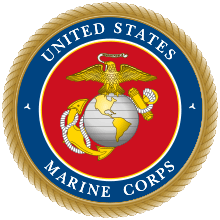
.jpg)